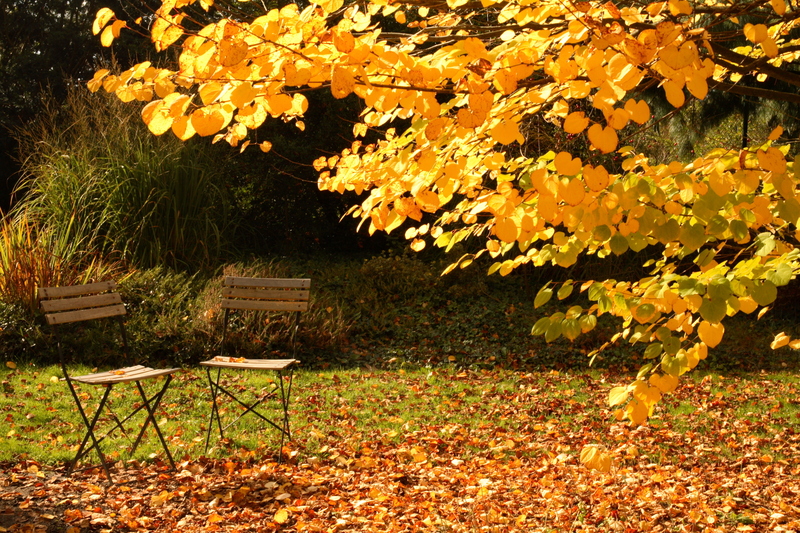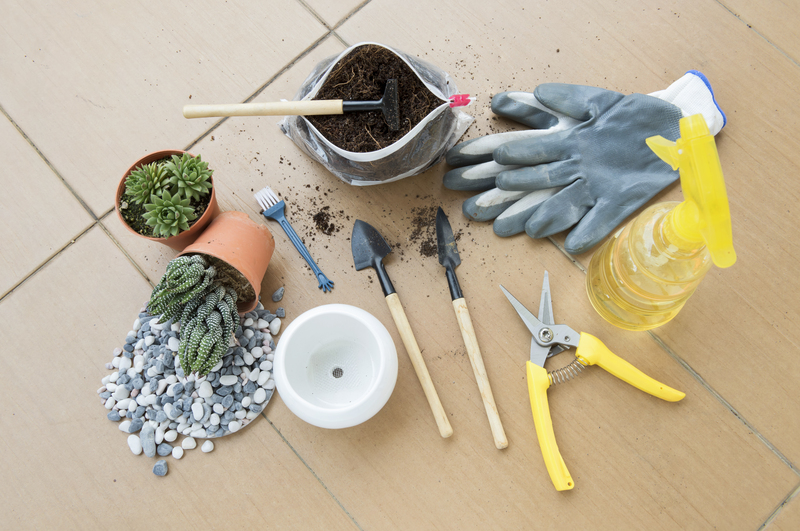Transform Your Yard by Getting Rid of Those Pesky Stumps
Are you dreaming of a lush, beautiful yard but find your progress halted by unsightly, stubborn tree stumps? Getting rid of old stumps is often the first and most crucial step to finally transform your yard into the outdoor oasis you've always imagined. This comprehensive guide will teach you how to eliminate those pesky stumps, why it's so important, and how your lawn could be dramatically improved by this simple (but essential) upgrade. From methods of stump removal to DIY tips and when to call for professional help, you'll find everything you need right here.
Why Should You Remove Tree Stumps?
Many homeowners wonder: "Is removing a stump really necessary?" The answer is often a resounding yes, especially if you're keen to revitalize your yard. Here's why:
- Boosts Curb Appeal: An old tree stump detracts from the aesthetic value of your property. Removing it opens pathways for landscaping and makes your lawn appear clean and well-maintained.
- Prevents New Tree Growth: Leftover stumps can sprout new shoots, leading to unsightly clusters of small trees and making your yard look messy.
- Removes Hazards: Stumps can easily become tripping hazards, especially if you have kids or elderly family members.
- Stops Pests in Their Tracks: Rotting stumps are attractive to ants, termites, beetles, and other wood-boring insects, which might eventually migrate to your home.
- Frees Up Space: Want to plant a new tree or expand your garden? Stump removal frees valuable yard space.
- Easier Lawn Maintenance: Mowing or whacking around stumps is annoying and can damage your equipment.

Different Methods to Get Rid of Pesky Stumps
There are several proven methods to remove those stubborn stumps from your yard. The right one depends on your stump's size, your available tools, your budget, and how hands-on you want the process to be.
1. Stump Grinding: The Fastest Professional Solution
Stump grinding uses a powerful machine to chew the stump down below ground level. Here's why this method is favored by many:
- Speed: Grinding is fast--most stumps can be handled within an hour.
- Effectiveness: No regrowth. The stump is ground into mulch, leaving nothing for new shoots to sprout from.
- Minimal Yard Disruption: Unlike digging, grinding leaves your lawn largely undisturbed.
This option is best for those with large or multiple stumps, or anyone who wants to transform their yard quickly and efficiently.
2. Manual Removal: Elbow Grease Required
If you have a small stump or you love a challenging DIY project, you can try digging out the stump by hand. You'll need:
- A shovel
- Digging bar or mattock
- Saw or axe
- Plenty of time and energy
Manual removal involves digging around the base to expose roots, chopping them, and then pulling the stump out. Although it's the most labor-intensive solution, it's a cost-effective way for homeowners to get rid of unwanted stumps.
3. Chemical Stump Removal
Chemical stump removers work by accelerating the decay of the wood, turning the stump into a soft, crumbly material over several weeks. Here's how:
- Drill holes in the stump and fill them with the chemical remover.
- Wait as the chemicals break down the cellulose and lignin, speeding decomposition.
- Remove the debris after the stump has decomposed enough to break apart easily.
While this isn't the fastest method, it involves minimal labor and is suitable for those who aren't in a hurry or when the stump is in an area where machinery can't reach.
4. Burning: A Traditional Solution
Burning has long been used to get rid of tree stumps, especially in rural areas. It involves creating holes in the stump, filling them with a combustible accelerant, and setting it alight (always check local fire regulations before attempting this). Burning reduces the stump to charcoal and ash, which can be easily removed.
Note: Never try burning a stump near buildings, trees, or other flammable materials, and always prioritize safety!
5. Natural Decomposition
If you're not in a hurry and prefer eco-friendly solutions, you can let the stump decompose naturally. Speed up the process by:
- Drilling holes into the wood to allow water and fungi access.
- Covering the stump with compost or soil to maintain moisture.
- Adding nitrogen fertilizer to accelerate microbial activity.
This method can take a year or more, but it's the most sustainable approach for non-intrusive stumps.
Choosing the Right Stump Removal Technique for Your Yard
Selecting the best way to get rid of tree stumps depends on several factors:
- Stump size and species: Large hardwood stumps are more stubborn and might require professional grinding.
- Location: Stumps close to structures, fences, or utilities need careful removal--burning may not be suitable, machinery access may be limited.
- Budget: Manual or chemical options are cheaper but take longer; grinding is more expensive up-front, but faster and more thorough.
- Time frame: If you want immediate results, opt for grinding or burning (where allowed).
- Personal preference: Some homeowners may want to avoid using chemicals for environmental reasons.
DIY Stump Removal: Can You Do It Yourself?
Wondering if you can clear your yard's stumps yourself and save some money? The answer is often yes--especially for smaller stumps. Here are some tips to make your DIY project more effective:
- Sharpen Your Tools: Sharp axes, saws, and chainsaws make the work easier and safer.
- Moisten the Soil: Water the area around the stump a day beforehand to soften the soil for digging.
- Leverage Roots: Chop away as many roots as possible to loosen the stump before attempting to lever it out.
- Protect Yourself: Always wear gloves, goggles, and sturdy boots when working with sharp tools.
- Work in Sections: For large stumps, break them apart gradually rather than all at once.
Note: Never attempt to remove large or deeply-rooted stumps alone. Incorrect removal can damage property or cause injuries.
Special Tip: Reuse That Stump!
Before you completely get rid of your old stump, consider creative ways to repurpose it:
- Transform it into a rustic garden seat.
- Use it as a natural planter by hollowing out the center.
- Turn smaller stumps into whimsical stepping stones.
- Incorporate it in your landscaping as a unique focal point.
With a little creativity, that "pesky stump" might just become a feature, not a flaw!
When to Hire a Professional for Stump Removal
While DIY tricks can work wonders for smaller stumps, some situations require the expertise only a professional can provide. Here's when to call in the pros to remove stumps and refresh your yard:
- Your stump is huge or from a hardwood species (like oak or hickory).
- It's close to underground utilities or building foundations.
- You need rapid, hassle-free removal.
- Your yard has multiple stumps to be cleared.
- Removing stumps is beyond your physical abilities or health limitations.
Professional stump removal services come equipped with specialized equipment, training, and insurance to handle difficult jobs safely and swiftly--transforming your outdoor space overnight.
What Happens After Stump Removal?
You've finally cleared your yard of those stubborn stumps--now what? After removal, you're left with fresh opportunities to transform your yard. Here's how to maximize your new space:
- Fill and Re-seed: Use soil to fill the void left by the stump and plant new grass seed for a seamless lawn.
- Create a New Garden Bed: The site is ideal for flowers, shrubs, or a vegetable patch.
- Plant a New Tree: Replace the old tree with a new one in a nearby spot--just avoid planting directly over the old root system.
- Add Hardscapes: The cleared space might make the perfect spot for a new patio, walkway, or fire pit.
Tip: If mulch from stump grinding remains, use it as a natural weed barrier in garden beds or pathways.

Frequently Asked Questions About Stump Removal
Q: How long does it take for a stump to rot naturally?
A: Natural decomposition can take 3-10 years depending on the tree species, stump size, moisture, and climate. Accelerating with chemicals or compost can speed it up.
Q: Will removing a stump damage my lawn?
A: Professional stump grinding is designed to minimize lawn damage. Manual or chemical removal can disturb the soil but is easily rectified with soil and grass seed.
Q: Can I plant a new tree where the stump was?
A: It's best to plant several feet away to avoid competition with old roots and to take advantage of unstressed soil.
Q: Do I need a permit to remove a stump?
A: Some homeowner associations or municipalities have requirements, especially for burning or chemical use. Always check your local regulations first!
Ready to Transform Your Yard? Start by Removing Those Pesky Stumps Today!
Don't let leftover tree stumps hold your yard hostage! Whether you choose the DIY path or hire a professional, removing those stubborn stumps is the quickest way to transform your outdoor space. Not only does stump removal instantly boost your home's curb appeal, but it also ensures safety, reduces pest risks, and creates a blank canvas for landscaping dreams.
Make the leap--start planning your stump-free landscape today, and enjoy the beauty, safety, and possibilities that come when you finally get rid of those pesky stumps.
If you're searching for "stump removal near me" or wondering "how to transform my yard fast," this guide has the answers. Roll up your sleeves or reach out to a professional--you'll be amazed by the difference.